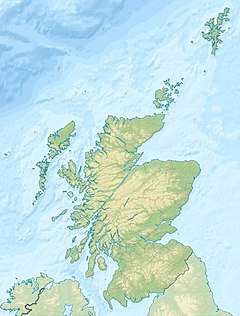Pladda Lighthouse

Pladda Lighthouse
|
|
|
Scotland
|
|
| Location |
Pladda Firth of Clyde Scotland |
|---|---|
| Coordinates | 55°25′30″N 5°07′06″W / 55.425129°N 5.118362°WCoordinates: 55°25′30″N 5°07′06″W / 55.425129°N 5.118362°W |
| Year first constructed | 1790 |
| Automated | 1990 |
| Construction | masonry tower |
| Tower shape | cylindrical tower with balcony and lantern |
| Markings / pattern | white tower, black lantern, ochre trim |
| Height | 29 metres (95 ft) |
| Focal height | 40 metres (130 ft) |
| Range | 17 nautical miles (31 km; 20 mi) |
| Characteristic | Fl (3) W 30s. |
| Admiralty number | A4326 |
| NGA number | 4316 |
| ARLHS number | SCO-172 |
| Managing agent | Northern Lighthouse Board |
Pladda Lighthouse is an active 18th century lighthouse situated at the southern end of the island of Pladda. The lighthouse dates from 1790 and was designed by Thomas Smith. It was the first light on the Clyde to be commissioned by the Commissioners of the Northern Lights. It had both an upper and a lower light to distinguish it from the three other lighthouses in the Firth of Clyde. In 1876 Pladda was about the third station to have a foghorn. The 'double lights' were replaced by a powerful flashing system in 1901. Lightkeepers were withdrawn in 1990 when the lighthouse was automated; it is now remotely monitored from the Northern Lighthouse Boards Headquarters in Edinburgh.
The lighthouse tower is 95 feet (29 m) in height; there are 128 steps to the top. Under normal conditions, its light (3 white flashes every 30 seconds) is visible for 17 nautical miles (31 km; 20 mi).
Pladda and its lighthouse feature extensively in Peter Hill's book Stargazing: Memoirs of a Young Lighthouse Keeper.
...
Wikipedia

